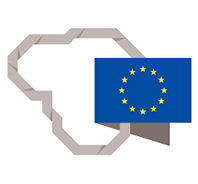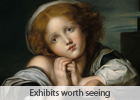-
-
Sculptor Antanas Aleksandravičius
Vertimo tipai
Teksto vertimas
Šaltinio tekstas
3594 / 5000
Vertimo rezultatai
Antanas Aleksandravičius was born in 1885. December 3 In the village of Gluosninkai, Kalvarija county, Suwalki province, in a large family with ten children. The future sculptor lost his parents very early on. An important role in the young man's life was played by his older brother Alexander's wife Marija, who, after due appreciation of the artistic abilities of fourteen-year-old Antanas, decided to send him to Krosna to study the subtleties of art with folk artist Matas Kasiulis. At the age of 18, the young man went to Suwalki and became a disciple of Adam King, a master of the churches. While working with the King, Aleksandravičius was mainly engaged in carving altar ornaments in Lithuania and Poland.
While traveling through the former ATR lands, the young artist met Boleslov Špetkovskis, the owner of a church and sculpture factory in Warsaw. Persuaded by Sppetkovsky, Aleksandravičius went to Warsaw and entered one of the Warsaw Art Schools, the so-called Museum of Crafts and Art. While studying in Warsaw, the artist became close friends with the teacher and writer Xaver Sakalauskas-Vanagėlis, who he later often remembered and depicted in his works. In order to avoid conscription into the army of the Russian Empire, Aleksandravičius moved to the United States in 1906. and the following year he entered the molding and drawing studio at the Art Institute of Chicago. After graduating from the institute, the sculptor returned to the Russian Empire. 1911–1918 Aleksandravičius attended the Academy of Arts in St. Petersburg.
After returning from the USA, the artist together with priest Povilas Jonuškevičius founded a school of works of art in Kaunas. The sculptor became the head of this educational institution and taught molding, drawing and casting there. During this period, Aleksandravičius not only taught, but also actively worked as an independent artist - creating busts of priests Kazimieras Jaunius and Kazimieras Pruolenis, composer Stasys Šimkus, teacher Tomas Ferdinandas Žilinskas and other famous personalities. Being a big fan of Maironis, he stumbled upon the bust and profile of nature of the priest and poet.
Dr. left a very deep mark on the sculptor's work. Jonas Basanavičius, whom Aleksandravičius met in Vilnius in 1918. During his life, the artist created many works for the patriarch of the nation.
After the proclamation of Independence, Aleksandravičius lived in Marijampolė and taught drawing and molding at Rygiškės Jonas Gymnasium. During this period, the monumental works of the sculptor dedicated to the defenders of Lithuania and those who died in the struggle for Lithuanian Independence came to light. 1922 the sculptor moved to Kaunas.
A. Aleksandravičius - a hardworking and productive artist: 1918–1940. he created over 600 sculptural works, in which many personalities deserving of Lithuania are immortalized - artists, politicians, spiritual authorities. Aleksandravičius drew inspiration not only from the images of the present and history of the Homeland, but also from religious experiences. The credo of the artist's life was the famous sentiment of the doctor Hippocrates - "Ars longa, vita brevis" (Latin: "Art is long-lived, life is short").
The sculptor was hit very hard in 1940. events, the loss of Lithuania's independence. In addition, many of Aleksandravičius' works were accidentally or intentionally destroyed during the Second World War.
The developer died in 1970. February 4, buried in Petrašiūnai cemetery.
During his long life, the artist has created 842 original sculptural works. A large part of Aleksandravičius' artistic heritage is currently preserved in Lithuanian museums and abroad - in Chicago, St. Petersburg and Moscow. Despite all the historical peripetias, nine of the fourteen sculptural monuments still stand in Lithuania.
Daugiau apie šį šaltinio tekstą
Šaltinio tekstas, reikalingas norint gauti papildomos vertimo informacijos
Siųsti atsiliepimą
Šoniniai skydeliai
-
Virtual Exhibitions






